The Character of Cricket Read online
Page 8
I walked on and watched one of the small boys buy a gas balloon for a gas balloon race. The girl didn’t put enough gas in, so it drifted forlornly across the field at a height of around three foot. And a boy in a Texaco sun hat bowled his father with a leg break, and a very old woman sat eating her lunch on a bench dedicated to the memory of ‘Lilian Ball who loved Gloucester County cricket and was Honorary Secretary of the Supporters Social Club from 5 November 1959 to 1970’. In the members’ bar a girl, smiling grimly, asked an official, ‘Are we all right for sandwiches – I’ve got to go and feed the band.’ Outside the British Telecom Marquee a man contemplated an empty cardboard box and said, ‘They get well looked after in there. Strawberries from bloody Kent. I’m a shareholder. I should be able to get in there.’
I went and sat down in the supporters club bar and had a pint. There was a picture of Jessop at the crease in a hooped cap about to pounce on a half-volley and another of Hammond – a copy of the famous one of him in his blazer. Someone ordered a pint of ‘lunatic soup’ and explained, ‘Cider, that is’; another man came in and said, ‘Who needs Lawrence with an Irishman like that Curran?’ and the man behind the bar said, ‘Trust ’e to say that.’ Then someone else said, ‘He’s not Irish, his dad’s from Ceylon and he’s from Zimbabwe,’ and the earlier speaker said, °E’s got an Irish passport, ’e wouldn’t be playing for us if ’e wasn’t Irish.’ And someone else observed that if he had an Irish passport he must be eligible to play for England. They seemed rather pleased with their present team, and although the ghosts of everyone from Jessop and Hammond to Zaheer and Procter were invoked, they weren’t just doing it to make invidious comparisons with the present. Perhaps they thought Procter really was a local lad and that Zaheer Abbas came from a Cotswold village of the same name.
I dare say it was a very untypical day, but it was an interesting and exuberant one and the place was buzzing with noise and interest. Oddly enough I caught few echoes of the past, for despite Jessop’s Tavern and Grace’s Gates it does not strike one as a historic ground in the way that some do. I was disappointed not to see the Lord Mayor wearing his gold chain. But I was very pleased to come across a man by the pavilion wearing a blazer with an elephant’s head on the breast pocket. Underneath the elephant it said ‘Matabeleland’.
I like to think that you don’t often see a Matabeleland cricket blazer at the Phoenix Assurance Ground at Bristol, but if so it only goes to show that I went on the wrong day. I should have chosen something more ordinary. All the same I shall always associate Bristol cricket ground with the day Gloucester bowled Australia out for 146 and the crowds came and the band played and the canvas billowed and I saw a man from Matabeleland by the pavilion.
Old Trafford
Very blue, Old Trafford.
This is not something that strikes those of us whose knowledge of the ground is second-hand. On television there are almost always bodies filling the seats, but on an overcast Lancashire day with the rain shafting in from the Pennines and the sawdust neatly piled at each end of the wicket the bodies are fairly few and far between. Even when the match in question is that classic of the English county championship, the Roses match itself. And when the seating is left exposed you can see that it’s dark blue. Some of it is old bench seating and the paint is peeling. The new seats, however, are plastic bucket ones and the paint is bright. I had somehow always thought of Old Trafford as various shades of grey or maybe sepia. It was slightly shocking to find this venerable place’s dignified monochrome so vividly slashed with colour.
‘The Yorkshire match isn’t what it was, I’m afraid,’ Mr Warburton had warned me over the phone. He is the assistant secretary at Old Trafford and has been on the staff since 1947. The year before he joined, the first after the war, 37,091 souls had packed into the ground for the first day of the Roses match. Today we agreed there couldn’t have been more than 1,500.
‘It used to be four or five hundred runs a day in those days,’ said an old codger in the stand to the right of the Wilsons stand – ‘Wilsons. Traditional Brewers since 1834.’ Wilsons put up the money for a covered way to run between the Ladies’ Pavilion and the main, Gentlemen’s one, but it didn’t work out. However, they let Lancashire keep the money, provided they put the Wilsons sign up on the stand opposite the pavilion.
I mentioned the 1946 Roses match attendance to my friend, the senior spectator, and he grunted. Never mind thirty thousand plus for the First XI, he’d been at Old Trafford when there were twelve thousand to watch the Seconds. I expressed some surprise and asked him why he thought this was. ‘Nowt else to do,’ he said, propounding the view, quite frequently expressed around the cricket grounds of old England, that in the last thirty-odd years the quality of cricket has declined but the quality of life improved. It is not a universal view, but it is widely held.
Be that as it may, the cricket that morning was most diverting, mainly because of a young Jamaican called Balfour Patterson who bowled stunningly fast and accurately enough to clean bowl both Yorkshire openers (not Boycott, who was sadly absent) and finish the day with six for 77. Much later, when England went to the West Indies, Patterson was known to the cricket writers as ‘Patrick’ Patterson. I prefer Balfour. At one point when the players retired for drizzle Yorkshire were 19 for three. Shortly after they went back they were 26 for four.
‘It’ll be over before they get yon covers on,’ said one know-all on the pavilion steps, and he was right. It was one of those days when the weather seemed to be in a constant twitch of indecision. But it didn’t worry Balfour, fresh from the Saddleworth League. The previous year, I was told, he was just as fast but he needed an umbrella of fine legs and third men to gather up the wide deliveries which eluded the keeper. This time he was bowling pretty straight and making it bounce disturbingly high. He made Paul Allott, who opened from the Warwick Road end, look quite ordinary.
It was sad the crowd was so small because it was obvious that the battle between Yorkshire and the Lancashire pace attack was being fought every inch of the way, and the ground, unlike others where there is a dearth of funds and or inclination, has been significantly modernised. Old Trafford was quite heavily bombed during the war. The Luftwaffe took the back off the Victorian pavilion and knocked down a stand or two, which was one reason why so many people got in for that 1946 Yorkshire game: they were standing, jammed tight, on the rubble.
Jerry ruined, jerry built. At least at first, for an early post-war vice-president had interests in corrugated asbestos, and you can still see a handful of corrugated asbestos roofs around to this day. The stand opposite the secretary’s office was rebuilt in 1951 but was condemned as unsafe and has had to be replaced. The irony is that this short-lived stand was built by professional builders. Further round the ground another stand, not especially beautiful, is nevertheless an effective memorial to the groundsman and four assistants who built it on their own with no outside assistance.
Latterly, however, the improvements appear more substantial. New stands, bucket seats, banqueting facilities, a restaurant open all the year round (the only place you can get a decent meal for miles except for the restaurant at Manchester United). It all brings in much needed cash as well. Of the twenty suites down by the old practice ground eighteen are let out for the whole year at around six thousand pounds a go while the other two are available for shorter ‘lets’. There is a wonderful stained glass window in the foyer of these executive suites. It was presented to the great R.G. Barlow in the 1880s. All true Lancastrian cricket lovers revere Barlow. He took 726 wickets for Lancashire between 1871 and 1891, and 31 of them belonged to W.G. Grace. The window shows Barlow with the wicket-keeper Richard Pilling and Barlow’s old skipper A.N. Hornby, and one can scarcely help recalling Francis Thompson’s lines, hackneyed perhaps but still affecting:
It is little I repair to the matches of the Southron folk,
Though my own red roses there may blow;
It is little I repair to the matches of the Southron
folk, Though the red roses crest the caps, I know.
For the field is full of shades as I near the shadowy coast,
And a ghostly batsman plays to the bowling of a ghost,
And I look through my tears on a soundless-clapping host
As the run-stealers flicker to and fro,
To and fro:–
O my Hornby and my Barlow long ago.
Home thoughts from Lord’s – a Lancashire version of Browning; words that, I suspect, will have hundreds of Lancashire supporters weeping into their Wilsons mild and bitter; and words you can’t possibly omit from any consideration of Old Trafford. I wish I had had time to go to Blackpool to see Barlow’s grave at Blackpool. Brian Bearshaw, who once lived in Blackpool and knew the headstone well, describes it as ‘a large white stone showing a set of stumps with the ball passing through middle-and-leg, and at the bottom, three little words... “Bowled at last”.’
I expect it was sunnier at Old Trafford a hundred years ago when Hornby and Barlow were stealing their runs, and I am virtually certain poor depressed exiled Francis Thompson thought it was sunnier. I incline to the Hazare view. There is a letter from old Vijay at Old Trafford sent from his bungalow opposite the Polo Gymkhana in Baroda. It was written in response to an invitation sent out to lots of great cricketers a year or so ago to come and drink champagne and launch the Old Trafford Appeal for money for better buildings. ‘Old Trafford,’ wrote Hazare, ‘seems to shine in the company of Jupiter Pluvius. This combination makes batting a challenge. In 1946 I encountered such a wicket. I regard my score of 44 in the Old Trafford Test as one of my best. Pollard, the local hero (aptly red-haired), and Bedser proved a terror on this wicket. I hit the only six of my Test career in that innings.’
That is the sort of achievement the record books never notice. There are others in a similar category. Old Trafford was where Frank Tyson first played representative cricket – for Lancashire Second XI. It was where, in ’56, Jim Laker took those nineteen Australian wickets. We all know about that. But how many of us realise that it was the first result in an England-Australia Old Trafford Test for fifty-one years? Denis Compton played what he considers his greatest Test innings here – ‘145 not out, including stitches’ – against Australia in 1948. In the 1921 Test Armstrong contrived to bowl two overs in succession. But my favourite vignette is Gubby Allen’s.
In 1934 he bowled the very first over in the Old Trafford Test and managed to make it last thirteen balls – six acceptable ones, three wides and four no-balls. (Two of the acceptable balls produced sharp, though missed chances at slip.) ‘I recall this event,’ wrote Allen, ‘as my affection for Old Trafford stems from it. Instead of derision I received sympathy and humour from the members and public for which I shall always be grateful. One comment, entirely good-natured, still rings in my ears: “Ah skipper, take him off or he’ll pass our total on his own.”’ (England had declared at 617 for nine.)
As a southerner (though there seem to be more Healds round Manchester than anywhere else in England) I’m always faintly sceptical about the much vaunted northern sympathy and humour. Too often it involves a gratuitous rudeness under the pretext of calling spades spades, but Old Trafford really did seem friendly. In one almost deserted stand there were three small boys, sitting by the boundary fence. ‘Ere we go, ere we go, ere we go!’ they chanted every time a Yorkshire wicket fell. Every other over Graham Fowler came and fielded close by them. He was noticeably chatty and friendly, no question of being grand or stand-offish. Outside the pavilion the members seemed to stand more than at, say, Lord’s and they ate and drank in a offhand fashion proscribed by MCC. One or two were dressed with quite flamboyant formality. One man had a red rose in his button-hole; another a brown bowler hat, exuberant whiskers and an orange-flowered bow-tie. But there were ‘Guinness’ T-shirts too, and evidently no nonsense about having to wear a collar and tie. I drank a pint of Wilsons in the huge bar at the back of the pavilion, the bit added on after the German bombing. Good beer, I thought. Several members lunched off it and plates of unaccompanied chips. One member pointed out another and said of him, ‘Been a member thirty years, he has, and I’ve never seen him move from the bar.’ It used, according to one friend of mine who used to work for the Manchester Guardian, to be rather an exclusive place. ‘I couldn’t have got in, in those days,’ he said. ‘Now anyone can become a member.’
Nevertheless there are proprieties still observed and traditions honoured. ‘No bare torsoes please,’ says one sign, nicely. And they still have a real live Ladies’ Pavilion with a sign which says, ‘Lady Subscribers may introduce one guest only.’ Unaccompanied gentlemen are not allowed.
And they honour their own. Not just Paynter’s sweater and J.T. Tyldesley’s bat – almost black; and the scorecard of 1874 when an England XI played Twenty-Two of Rochdale or the 1935 photo of the Lancashire team which was the first ever to fly to an away match. The four modern office blocks hard by the practice ground have each been named after a Lancashire hero. There is Statham House and MacLaren and Duckworth and Washbrook, quite apart from Pilling and my Hornby and my Barlow in stained glass at the entrance to the executive suites. I wonder what they would have thought of ‘executive suites’. I can’t think Francis Thompson would have approved.
In an odd way I was pleased to see Old Trafford on a rather dour, grey, sparsely populated day. The cricket was keenly contested. Hartley and Bairstow staged a recovery, and then young Balfour came back with another three wickets and the White Rose lot were all out for 205. Lancashire got four overs in the dusk and Jarvis and Sidebottom took a wicket apiece. Honours even.
I took the train back to Manchester Piccadilly. A dingy little suburban line that passes within a six-hit of the ground, then threads through a modern industrial estate to the old Victorian inner city. Warwick Road is the cricket station. Old Trafford is further on. The train was almost as empty as the ground. I watched the weather trying to decide whether to rain and remembered the pantomime of players to-ing and fro-ing in and out of the pavilion; of the ground staff covering and uncovering the wicket. A mother and child got in at Deansgate. The boy was obviously a football hooligan of the future destined for the other, shriller, rougher Old Trafford. ‘Stephen,’ said his mother at last, ‘Stop spitting out the window.’
A week later they played the first of the one-day internationals in Manchester. The sun shone. A capacity crowd of over twenty thousand. Bodies on every seat and not a hint of the bright blue bucket seats. A fine day’s cricket; pint upon pint of Wilsons. And yet that’s not my idea of Old Trafford. I cherish my day sitting with an old codger who could remember twelve thousand watching the Second XI and yet another West Indian fast bowler from the Saddleworth League bounding in past the little pyramid of sawdust. Vijay Hazare was right. Old Trafford shines in the company of Jupiter Pluvius.
Northampton
Northamptonshire was my father’s cricket love because he was brought up next door in Bedfordshire. His early heroes were men like Jupp and Timms, who were hardly of the class of Hammond or Hendren despite the 30,000 runs they scored between them. I, however, never went near the county in childhood and was unable to share his enthusiasm. This produced far and away the most acrimonious arguments of my childhood. Most of them, as I recall, centred around the performance of Raman Subba Row.
‘Subba Row and Lightfoot put on 376 against Surrey.’
‘375.’
‘Six.’
‘Five.’
Or even more ridiculous, ‘Subba Row made 260 not out against Lancashire. It’s the highest any Northants player has ever made.’
‘Isn’t.’
‘Is.’
We never, as far as I can remember, argued about the finer points of the game; never discussed the aesthetic qualities of, say, Subba Row’s cover drive as against that of Gimblett, or even whether Subba Row should play for England. It was always something statistical. And we never telephoned the Daily Telegraph information desk to arbitrate, just
went on disagreeing until I was ordered to my room. I suspect a great many fathers and sons argue like this, which is why I now have a firm rule about arguments over certainties. ‘Look it up,’ I repeat boringly, no doubt irritating my children just as much as my father used to irritate me with his unquestioning advocacy of Northants in general and Subba Row in particular.
I had never even been to Northampton until July 1985 when they were playing Derbyshire. What I knew about the town would have taken up little more than the back of a postcard: boots and shoes; a football team unpromisingly called the Cobblers (as in ‘What a load of...’) and the cricket. A quick cull through the reference books revealed that the town boasts one of England’s only four round churches, and that Jerome K. Jerome, who wrote Three Men in a Boat, died suddenly in Northampton while on a motoring holiday in 1927. Not a lot else.

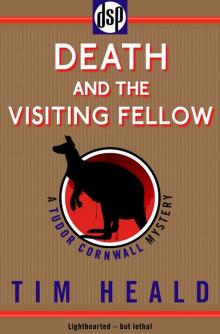 Death and the Visiting Fellow
Death and the Visiting Fellow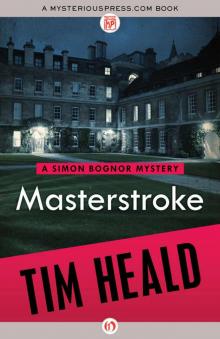 Masterstroke (The Simon Bognor Mysteries)
Masterstroke (The Simon Bognor Mysteries) Deadline (The Simon Bognor Mysteries)
Deadline (The Simon Bognor Mysteries)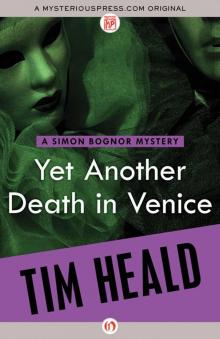 Yet Another Death in Venice (The Simon Bognor Mysteries)
Yet Another Death in Venice (The Simon Bognor Mysteries) Just Desserts (The Simon Bognor Mysteries)
Just Desserts (The Simon Bognor Mysteries) Let Sleeping Dogs Die (The Simon Bognor Mysteries)
Let Sleeping Dogs Die (The Simon Bognor Mysteries)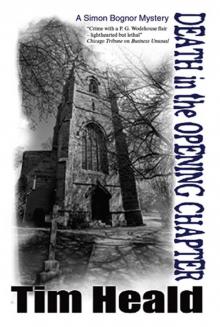 Death in the Opening Chapter
Death in the Opening Chapter Blue Blood Will Out (The Simon Bognor Mysteries)
Blue Blood Will Out (The Simon Bognor Mysteries)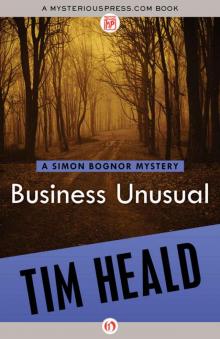 Business Unusual (The Simon Bognor Mysteries)
Business Unusual (The Simon Bognor Mysteries)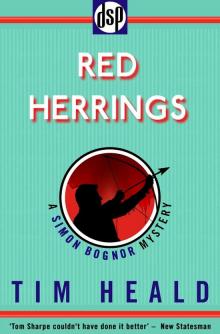 Red Herrings
Red Herrings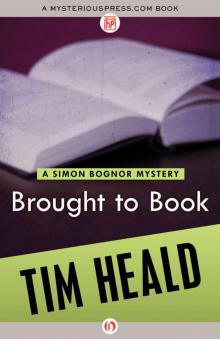 Brought to Book (The Simon Bognor Mysteries)
Brought to Book (The Simon Bognor Mysteries)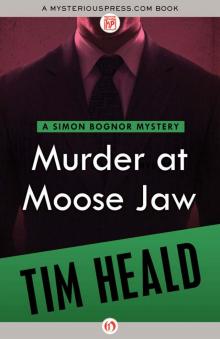 Murder at Moose Jaw (The Simon Bognor Mysteries)
Murder at Moose Jaw (The Simon Bognor Mysteries)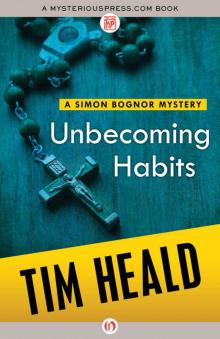 Unbecoming Habits (The Simon Bognor Mysteries Book 1)
Unbecoming Habits (The Simon Bognor Mysteries Book 1)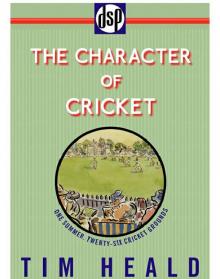 The Character of Cricket
The Character of Cricket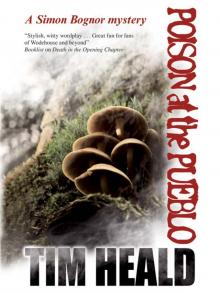 Poison At The Pueblo
Poison At The Pueblo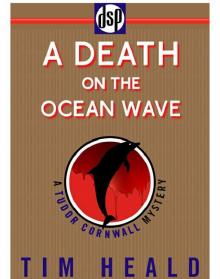 A Death on the Ocean Wave
A Death on the Ocean Wave